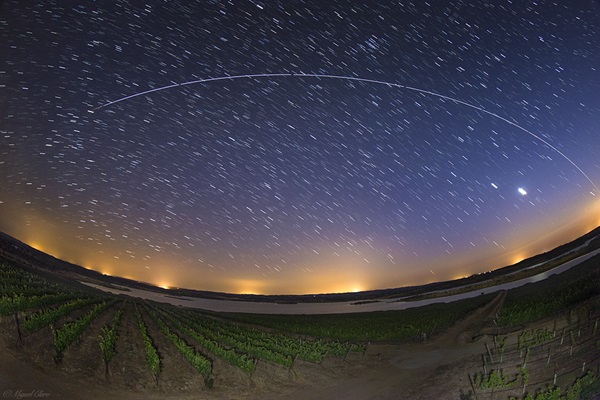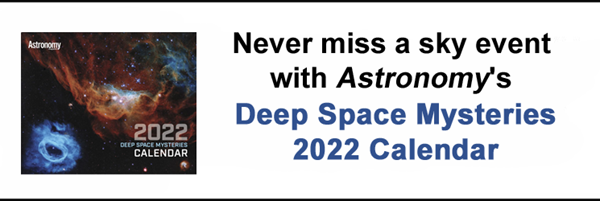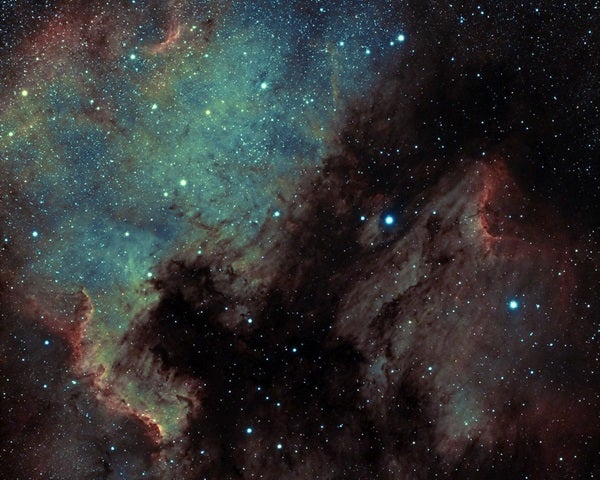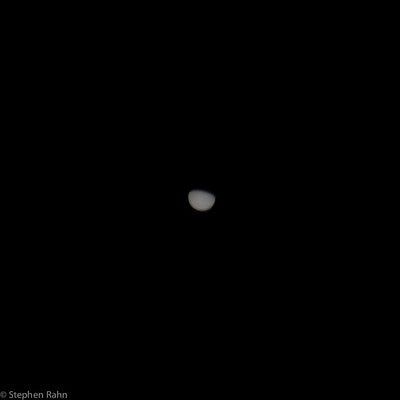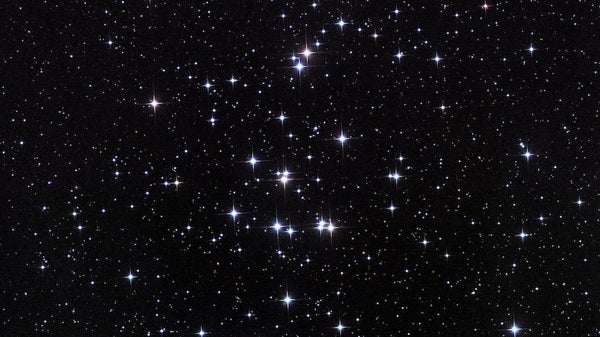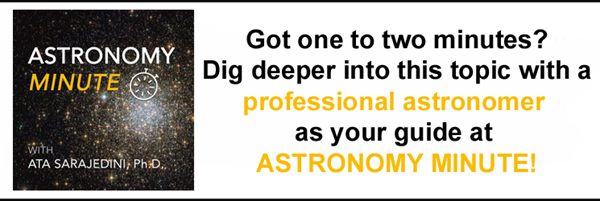Friday, October 22
In the late 1700s, Charles Messier created his famous catalog to identify objects that he didn’t want to mistake for comets. Thus, most of the entries in his list are small and appear fuzzy at low power.
One such object is the globular cluster M72 in Aquarius the Water-bearer. Look south after dark tonight to find it about 3.4° south-southeast of magnitude 3.8 Epsilon (ϵ) Aquarii. It’s currently sitting between bright Jupiter (to its southeast) and Alpha (α) Capricorni to its southwest.
At magnitude 9.2, M72 is the faintest globular cluster — an old grouping of stars — in Messier’s catalog. You’ll need binoculars or a telescope to spot it, as it falls well below the magnitude your naked eyes can see. The cluster stretches nearly 7′ across and sits some 55,000 light-years from Earth — but is currently moving in our direction at a speedy 160 miles (255 kilometers) per second.
About 1.5° east of M72 is the loose grouping of four 10th- to 12th-magnitude stars cataloged as M73. They’re much closer — 2,500 light-years — and span only 3′ on the sky.
Sunrise: 7:19 A.M.
Sunset: 6:10 P.M.
Moonrise: 7:24 P.M.
Moonset: 9:10 A.M.
Moon Phase: Waning gibbous (96%)
*Times for sunrise, sunset, moonrise, and moonset are given in local time from 40° N 90° W. The Moon’s illumination is given at 12 P.M. local time from the same location.
Saturday, October 23
Cepheus the King is a house-shaped pattern of stars that circles Polaris as one of several circumpolar constellations. That means it’s typically high and easy to observe from many locations in the Northern Hemisphere.
Tonight, let’s zoom in on Herschel’s Garnet Star, a ruby red-colored point of light also cataloged as Mu (μ) Cephei. This 4th-magnitude luminary, also called Erakis, is located in the southern part of the constellation, about 1.5° south of the center point on a line drawn between Alpha and Zeta (ζ) Cephei.
Mu is a cool but bright supergiant star that is one of the most luminous suns in our galaxy. Although its relatively low temperature certainly contributes to its red color, the veil of galactic dust that sits between us and this star further reddens its glow. Mu is also a variable star, which brightens and then fades again over a period of about 800 to 1,000 days.
Sunrise: 7:20 A.M.
Sunset: 6:08 P.M.
Moonrise: 7:56 P.M.
Moonset: 10:11 A.M.
Moon Phase: Waning gibbous (92%)
Sunday, October 24
The International Space Station, or ISS, zips around the planet about once every 90 minutes at an altitude of 250 miles (400 km). This orbit is ever-changing, so it doesn’t always pass over the same place twice every time, but you can easily determine if and when the ISS is visible from your location.
When you do see it, the glow comes from sunlight reflecting off the station’s exterior as it orbits high overhead, even if you can’t see the Sun from your location. (It’s the same reason artificial satellites are visible in the night sky.) It generally takes a few minutes for the ISS to cross the sky from a given location, and this morning, those in the midwestern U.S. can catch it beginning just before 6:15 A.M. (All times in CDT.) The station will pop into visibility in Aries and move up toward the North Celestial Pole near Polaris, then sink back to the horizon in Boötes and disappear just before 6:20 A.M. It will reach a height 48° above the horizon in the north-northwest around 6:16:30 A.M., blazing a bright magnitude –3.4. You can find out more, including whether it’s visible from your specific location, at heavens-above.com.
This is actually the second of two passes the ISS will make this morning; it is briefly visible for about two minutes starting just before 4:42 A.M., but crosses only a very small region of the sky, from Leo to Coma Berenices, and is a much fainter magnitude –0.3.
The Moon reaches apogee — the farthest point from Earth in its not-quite-circular orbit — at 11:28 A.M. EDT. At that time, it will sit 252,038 miles (405,616 km) away.
Sunrise: 7:21 A.M.
Sunset: 6:07 P.M.
Moonrise: 8:33 P.M.
Moonset: 11:12 A.M.
Moon Phase: Waning gibbous (86%)
Monday, October 25
Mercury reaches greatest western elongation at 2 A.M. EDT, when it stands 18° from the Sun. From the midwestern U.S., the small planet rises around 5:50 A.M. local time and has climbed nearly 12° above the horizon 30 minutes before sunrise. It’s blazing a bright magnitude –0.5 in Virgo.
Mercury currently spans 7″ and is 57 percent lit. Despite the fact that it will now slowly start moving back toward the Sun in the sky, the speedy planet should remain easy to find in the morning for now. It will continue to brighten a few tenths of a magnitude by the end of the month.
If you step outside early enough to catch a few stars still shining, you’ll see that Mercury sits about 3.5° below magnitude 2.7 Porrima (Gamma [γ] Virginis). Porrima is one of the northern sky’s most famous double stars, so take a peek in a telescope if you’ve got time. At times its stars come too close to separate without a large instrument, but you’re in luck — they’re currently separated by a wide enough gap (about 3″) that even small scopes should resolve the two magnitude 3.5 components. Each is about 1.5 times as massive as our Sun.
It takes nearly 170 years for these stars to complete a full orbit around each other. They last came closest in 2005.
Sunrise: 7:22 A.M.
Sunset: 6:06 P.M.
Moonrise: 9:17 P.M.
Moonset: 12:09 P.M.
Moon Phase: Waning gibbous (78%)
Tuesday, October 26
There’s a roughly four-hour window tonight after sunset when there is no Moon in the sky. Use this time for some deep-sky observing, targeting objects such as the North America Nebula (NGC 7000) in Cygnus.
This constellation is already high overhead as darkness falls, and it’s easy to locate its alpha star, Deneb, as a bright, magnitude 1.25 luminary. The North America Nebula sits just over 3° east of Deneb, alongside the Pelican Nebula (IC 5070) to its west. The two are separated by a dark swath of dust. You’ll want binoculars or a telescope to see them.
The North America Nebula looks just like its namesake, its pale green glow forming the outline of Canada, the U.S., and even Mexico. In reality, this is a massive cloud of glowing hydrogen gas stretching about 100 light-years across. Its atoms are excited by light from the nearby 6th-magnitude star HD 199579. Although this star appears fainter than Deneb, it’s actually much hotter and brighter. Deneb only looks brighter because it’s a bit closer and unobscured by the dust and gas shrouding HD 199579.
Sunrise: 7:23 A.M.
Sunset: 6:05 P.M.
Moonrise: 10:07 P.M.
Moonset: 1:02 P.M.
Moon Phase: Waning gibbous (70%)
Wednesday, October 27
As it orbits the Sun closer in than Earth, the planet Venus undergoes changing phases. Today, that phase reaches 50 percent, leaving Venus’ 24″-wide disk half-lit.
But there’s a catch: Thanks to a phenomenon called Schröter’s effect, Venus can appear to reach this half-lit phase, or dichotomy, earlier or later than expected. When it’s visible in the evening sky, as it is now, the planet tends to reach dichotomy early. So, if you’re reading this column ahead of time, try observing Venus earlier in the week to see if it already looks half-lit to you. The planet currently sets a little over two hours after the Sun and hangs against the stars of the large constellation Ophiuchus. But you won’t need any help to find it, blazing at magnitude –4.5 in the twilight sky.
Astronomers still aren’t entirely sure what causes Schröter’s effect, but believe it may be a combination of the way Venus’ atmosphere scatters light and fact that the terminator separating night from day appears darker near the center.
Sunrise: 7:24 A.M.
Sunset: 6:03 P.M.
Moonrise: 11:04 P.M.
Moonset: 1:50 P.M.
Moon Phase: Waning gibbous (61%)
Thursday, October 28
Last Quarter Moon occurs at 4:05 P.M. EDT, after our satellite has already set. You’ll currently find it high in the sky during the early morning hours, a little less than 8° north-northwest of the famous Beehive Cluster (M44) in Cancer the Crab.
The Beehive is a large, young group or stars spanning roughly 95′. It’s one of the nearest young, or open, cluster of stars to Earth and is visible with the naked eye. Ancient astronomers referred to it as a “little mist” or “little cloud.” Although the cluster as a whole appears as a magnitude 3.7 glow, its brightest stars range from 6th to 8th magnitude and are easy to pick out individually in binoculars or a small telescope.
The Beehive sits at the center of the constellation, with the Crab’s brightest stars surrounding it at roughly equal distances: Acubens 8.8° to the southeast, Tegmine 6.8° to the west, and Iota (ι) Cancri 9.4° to the north.
Sunrise: 7:25 A.M.
Sunset: 6:02 P.M.
Moonrise: —
Moonset: 2:31 P.M.
Moon Phase: Waning gibbous (51%)
Friday, October 29
Venus reaches greatest eastern elongation (47°) from the Sun at 5 P.M. EDT. It’s hanging high in the southwest after sunset, forming a long line on the sky with two other familiar, recognizable planets: Saturn and Jupiter.
Let’s start with Saturn, which sits 43.5° east of Venus in the western portion of Capricornus. The Ringed Planet glows at magnitude 0.5 and its disk spans 17″ in a telescope. Of course, the disk isn’t what you’re here to see — it’s the rings, which stretch nearly 39″ end to end and are currently showing off their northern face. As it grows darker, see if you can spot the Cassini Division between the outer A ring and the inner B ring. This gap stretches about 3,000 miles (4,100 km) and was discovered in 1675 by Giovanni Cassini, for whom it is named.
Next, slide 15.4° farther east of Saturn to spot brighter, magnitude –2.5 Jupiter. Our solar system’s largest planet currently spans 42″ and is surrounded by four bright moons: Io, Europa, Ganymede, and Callisto. Early tonight, Io (closest) and Europa (farthest) sit to Jupiter’s west, while Ganymede and Callisto are hidden in the planet’s shadow, which stretches far to its east. Ganymede reappears around 8:30 P.M. EDT, and Callisto just before 9:50 P.M. EDT — but at a greater distance from the planet than Ganymede! This strange effect is due to the geometry of the system, as viewed from Earth.
Sunrise: 7:26 A.M.
Sunset: 6:01 P.M.
Moonrise: 12:05 A.M.
Moonset: 3:07 P.M.
Moon Phase: Waning crescent (41%)

